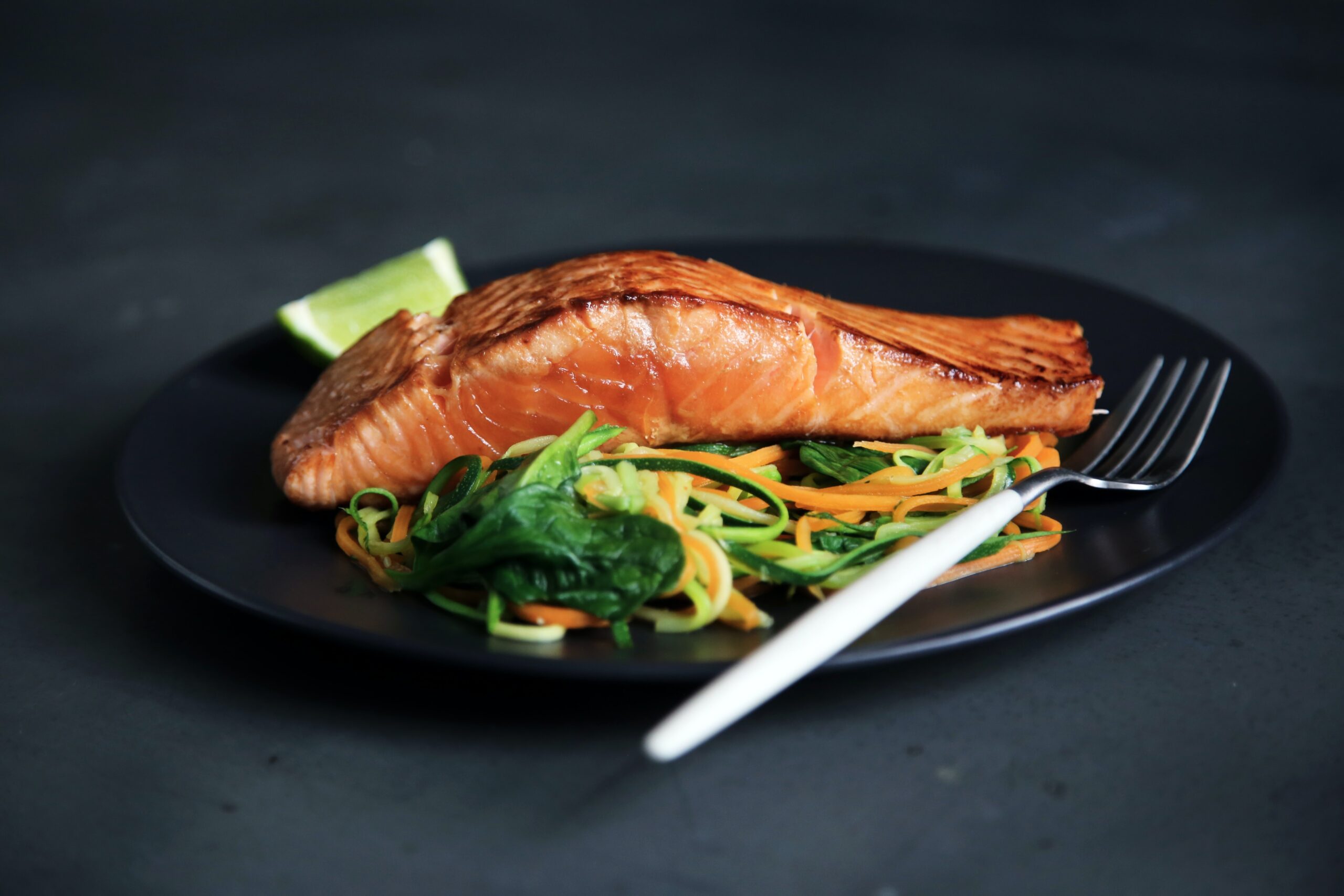When it comes to maintaining a balanced, low-carb diet, paying attention to the nutrients in your food is crucial. While many people focus on keeping their carbs low, it’s just as important to ensure you’re getting enough essential vitamins and minerals, like potassium. Potassium plays a vital role in muscle function, fluid balance, and nerve health. A well-rounded low-carb diet should include a variety of high-potassium foods, and we’re here to help you make the right choices.
Welcome to Mama Bear’s Cookbook, your ultimate source for mouthwatering, family-friendly low-carb meals. Our experts are passionate about sharing essential knowledge on health, wellness, and balanced diets. Rest assured, you’re in good hands on your path toward a healthier, happier lifestyle. Today, we’re focusing on high-potassium, low-carb foods that can transform your diet and elevate your well-being. Join us as we explore potassium-rich ingredients, reveal the benefits they offer, and discover how to incorporate them into your daily meals.
Why Potassium Is Essential in a Low-Carb Diet
Before diving into our list of high-potassium, low-carb foods, let’s discuss why it’s important to include this mineral in your diet. When embarking on a low-carb lifestyle, many tend to overlook the need for essential nutrients; instead, they focus solely on restricting carbohydrates. However, a balanced, healthy diet is about more than just limiting one macronutrient.
Potassium is especially crucial during the initial stages of transitioning to a low-carb diet. As the body starts to burn stored fat for energy rather than relying on carbohydrates, it’s natural for fluid levels to drop. This decrease in fluids can lead to an imbalance of electrolytes and cause uncomfortable symptoms, such as muscle cramps, fatigue, and dizziness – often known as the “keto flu.”
Fortunately, consuming high-potassium foods can alleviate these symptoms and help maintain a well-rounded, nutrient-rich, low-carb diet. In addition to combating the adverse effects of a low-carb lifestyle, potassium is essential for:
– Regulating fluid balance in the body
– Supporting proper muscle function and strength
– Lowering blood pressure by balancing the effects of sodium
– Promoting a healthy nervous system and brain function
– Reducing the risk of kidney stones and osteoporosis
Now that you understand the importance of potassium let’s explore some delicious high-potassium, low-carb food options!
Top 10 High-Potassium, Low-Carb Foods to Incorporate into Your Diet
Finding the right balance of nutrients while adhering to a low-carb diet can be a challenge. Here’s a list of our top 10 high-potassium low-carb foods, along with their potassium content per serving and ideas for incorporating them into your daily meals.
- Avocado: This creamy, versatile fruit provides a whopping 975 mg of potassium in one whole avocado. It’s also high in fiber and healthy fats, making it a low-carb staple. Use this nutrient-dense fruit in salads and smoothies, or enjoy it as a topping for your protein of choice.
- Spinach: Packed with vitamins and minerals, one cup of cooked spinach contains about 839 mg of potassium. A true superstar in the leafy green category, spinach can be added to salads, soups, omelets, or sautéed as a side dish.
- Swiss Chard: Similar to spinach, Swiss chard is nutrient-dense and boasts 961 mg of potassium per cooked cup. Its colorful stems and mildly sweet flavor make it an excellent addition to salads, stir-fries, and sautées.
- Salmon: Rich in potassium, omega-3 fatty acids, and high-quality protein, a 6-ounce serving of salmon contains around 652 mg of potassium. Enjoy this versatile fish grilled, baked, or pan-seared to build a satisfying, low-carb meal.
- Artichokes: Artichokes are an incredibly flavorful low-carb option, offering around 343 mg of potassium per medium-sized artichoke. Steam or bake them as a side dish, add them to salads or puree them into a delicious, creamy dip.
- Zucchini: This low-carb favorite is packed with nutrients, including around 512 mg of potassium per medium-sized zucchini. Experiment with zucchini noodles as a pasta alternative, incorporate them into your stir-fries, or create delicious zucchini fritters for a tasty side dish.
- Mushrooms: With approximately 428 mg of potassium per cup, mushrooms are an excellent source of both potassium and low-carb nutrition. Add them to your omelets, salads or as a topping for your low-carb pizzas. Don’t forget to try delicious stuffed mushroom recipes, too!
- Asparagus: One cup of cooked asparagus provides 271 mg of potassium and ample fiber to keep you satiated. Enjoy this nutrient-dense vegetable roasted, sautéed, or steamed with some garlic and olive oil for a delightful low-carb side dish.
- Cauliflower: This versatile, low-carb veggie contains around 320 mg of potassium per cup. Transform cauliflower into rice, make a keto-friendly pizza crust, or use it as a substitute for high-carb foods like mashed potatoes and macaroni and cheese.
- Kale: Popular for its superfood status, one cup of cooked kale boasts 296 mg of potassium. Blend it into smoothies, make kale chips, or sauté it with some garlic for a nutritious, low-carb side dish.
Combating Potassium Deficiency: The Importance of Variety and Balance
Potassium deficiency, also known as hypokalemia, results from an inadequate intake of potassium or excessive loss of the mineral due to factors such as excessive sweating, severe vomiting, or other health issues. Symptoms of potassium deficiency can include muscle weakness, fatigue, and irregular heartbeat. Those following a low-carb diet need to be especially mindful of monitoring their potassium levels, as they may experience increased potassium loss due to a combination of reduced insulin production and increased fluid levels.
To combat potassium deficiency and support overall well-being, it’s crucial to maintain a well-rounded diet rich in high-potassium ingredients, along with other essential nutrients such as sodium, magnesium, and calcium. Don’t be afraid to mix and match different food options from the list above, tailoring your meals to your personal preferences and nutritional needs.
Remember that variety is key — not only does it ensure you’re consuming an array of essential nutrients, but it also keeps your palate engaged and prevents mealtime boredom. Experiment with the high-potassium, low-carb ingredients listed above, and don’t hesitate to branch out and try new recipes.
Safety Concerns: How Much Potassium Is Too Much?
While potassium is essential for proper body function, there’s always the risk of consuming too much. The recommended daily intake for adults is between 2,500 and 3,000 mg for women and 3,000 to 3,800 mg for men.
Excessive potassium consumption can lead to a dangerous condition called hyperkalemia, which occurs when the potassium levels in the blood are higher than normal. This condition can cause serious health issues such as muscle fatigue, weakness, abnormal heart rhythms, and even heart failure. Those with kidney disease or taking medications affecting potassium levels must be especially cautious and consult with their healthcare provider before increasing their potassium intake.
While it’s important to be aware of your potassium consumption, it is rare to experience hyperkalemia from dietary sources alone. The key is to strike the right balance, maintaining a well-rounded, nutrient-rich, low-carb diet that caters to your individual requirements.
Putting it All Together: Building High-Potassium, Low-Carb Meal Plans
Now that you’re armed with knowledge on high-potassium, low-carb foods, you’re ready to take your low-carb diet to the next level. To create satisfying, nutrient-dense meal plans, use the following steps:
- Start with your protein: Choose high-potassium protein sources such as salmon, chicken, or turkey. Feel free to alternate between different protein options to keep things interesting.
- Build a base of veggies: Incorporate a combination of leafy greens and potassium-rich vegetables like spinach, kale, and zucchini. Be creative, making salads, stir-fries, or veggie noodles.
- Experiment with healthy fats: Pair your meals with avocado, olive oil, or nuts to boost healthy fat and nutrient intake.
- Plan your snacks wisely: Opt for high-potassium, low-carb snacks such as pumpkin seeds, almonds, or sliced cucumber topped with avocado or your favorite cheese.
- Stay hydrated: Drink plenty of water throughout the day, and consider adding electrolyte-packed beverages to ensure your body’s fluid and electrolyte balance remains in check.
By implementing these steps and incorporating the high-potassium, low-carb foods mentioned above, you’ll be well on your way to building and maintaining a well-rounded, nutrient-rich low-carb diet that promotes optimal health and well-being.
Conclusion
Embarking on a low-carb journey means more than just cutting back on carbs; it also involves making smart choices to ensure your body receives essential nutrients, such as potassium. By incorporating a variety of high-potassium, low-carb foods into your meal plans, you can promote a well-rounded diet that supports optimal health and wellness.
Achieving the right balance of nutrients can seem daunting, but Mama Bear’s Cookbook is here to help you every step of the way. Our team of experts has curated a wealth of delicious, family-friendly low-carb recipes that focus on providing a satisfying and nutrient-rich dining experience – making the low-carb lifestyle enjoyable and sustainable.
Ready to transform your low-carb diet with high-potassium meal options? Browse through Mama Bear’s Cookbook to find a treasure trove of mouthwatering recipes and expert advice that cater to your nutritional needs. Boost flavor, enhance your health, and elevate your well-being with our extensive low-carb, high-potassium options. Bon appétit and happy cooking!


